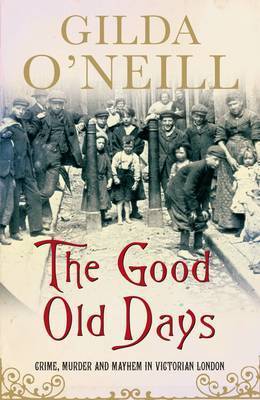Were things really better in the good old days? The nineteenth century was a time when there were not only massive gulfs being created between the upper, middling and working classes, but there was also a growing awareness of the existence of an even more impoverished underclass a terrifying demi-monde of criminals, tarts and no-hope low lifes. This was the layer of ruffians' identified by social investigators such as Charles Booth and Henry Mayhew. The extent of those class divisions and consequent poverty meant that it could honestly be said by commentators of the time that the mores, lives and even language of the poorest in society were less familiar to their more privileged neighbours than those of the inhabitants of what was known then as darkest Africa'. However, this unfamiliarity certainly didn't prevent a certain amount of experimental visiting a kind of poverty tourism known as slumming - by toffs who chose to risk their safety for the thrill of mixing with the roughs in the taverns, music halls and case houses down by the docks. But they had to take care.
Uniformed gangs would hold their street' in violent clashes with opposing mobs, and foreign seamen who had jumped ship would set up home near the river, close to the massive wealth hidden behind the high, blind walls of the bonded warehouses, and everyone knew about the alien hoards' propensity for making a living from thievery, opium, and whores...Gilda O'Neill's powerful exploration of the teeming underbelly that was to be found in the fog-bound streets, rat-infested slums, common lodging houses, boozers, penny gaffs and brothels in the heart of the greatest empire that the world has ever seen brings to life the real working class London of Victoria's reign.
- ISBN10 0670915459
- ISBN13 9780670915453
- Publish Date 7 September 2006
- Publish Status Out of Print
- Out of Print 10 August 2007
- Publish Country GB
- Publisher Penguin Books Ltd
- Imprint Viking
- Format Hardcover
- Pages 304
- Language English
